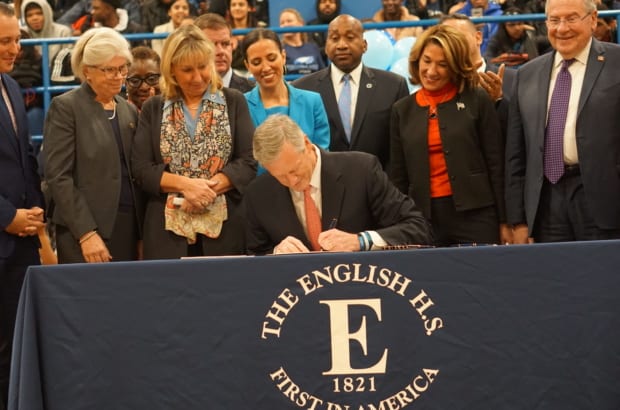If we continue on the current path, a few years from now the Student Opportunity Act (SOA) will make an excellent Kennedy School case study of a well-intentioned effort that failed to deliver on its promise.
Here’s the problem in a nutshell: The Legislature hasn’t provided certainty that the state will make good on its promise to deliver the funds in equal increments over the law’s seven-year phase-in period. Lacking confidence that they will see these scheduled increases in Chapter 70 aid, school districts have been hesitant to develop plans to deploy the new funds strategically.
When Governor Baker signed the bill into law in November 2019, districts had plenty of reasons to be skeptical that they would receive the resources as promised. Almost overnight, they found that their skepticism was well-placed. Districts didn’t get the scheduled increase this year, and so far, signs suggest they will be shortchanged again next year. (The Baker administration’s FY 2022 budget proposal doesn’t make up for last year’s shortfall and it relies on questionable enrollment assumptions that will almost certainly lead to lower Chapter 70 distributions than the law intended).
The Department of Elementary and Secondary Education (DESE) is caught in the middle. Recognizing that districts have little certainty about what funding they can expect, DESE has asked for very little in terms of accountability. As we wrote in a previous Journal entry, the law’s delicate accountability mechanism is a plan detailing how districts will deploy new funds and the student learning outcomes these strategic initiatives will generate.
The January 15th deadline for filing SOA plans came and went without any attention. The DESE board hasn’t discussed the plans since last May. You can’t find a single news report describing how communities built their plans, nor will you find these plans on an accessible public website.
By overlooking SOA plans, DESE has allowed districts to fall back on the familiar habit of sending “compliance paperwork” that the state duly places in bins for safekeeping.
To be sure, many excellent educators feel this additional layer of bureaucracy is unnecessary; districts understand their own needs and they can make good decisions about where to place their resources without a lot of process. Research lends some support to this perspective. All else equal, additional money does lead directly to improvements in students learning.
However, achieving significantly more success for students calls for systemic change. And for that, communities need a solid plan that gets everyone invested in the outcome, tracks progress rigorously, and provides accountability for results. From early literacy to college and career pathways, the hope was that the SOA would usher in a new era of local accountability for transformative new approaches to learning.
We can put the SOA back on the right track by simply acknowledging that now is not the right time for districts to run the strategic planning process the law envisioned. Getting students back to school and figuring out how to spend federal recovery resources to help make up for lost learning time is paramount. Going forward, we must commit to providing greater predictably on state funding coupled with a more transparent and effective strategic planning process.
